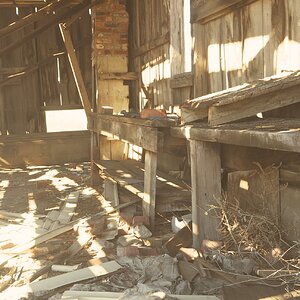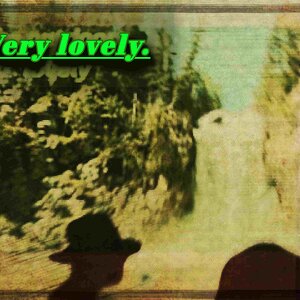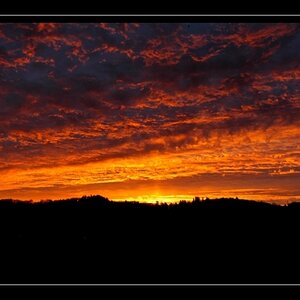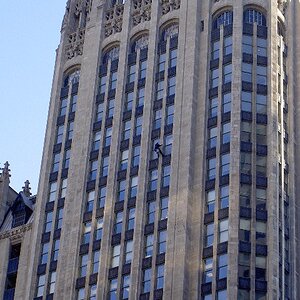Tim Tucker 2
No longer a newbie, moving up!
- Joined
- Jun 8, 2017
- Messages
- 333
- Reaction score
- 241
- Can others edit my Photos
- Photos OK to edit
Reproduced from my latest blog post.
A more relaxed Zone system - March 2019
A bit of a departure for me as I shall delve into the technical, not to the n’th degree but some practical guidelines that have helped me.
With digital cameras being so capable and automated these days I got to wondering whether the small increments in technology actually made any difference to the images at all, and if so if that difference was positive or negative.
It’s not as odd an idea as it may seem. Recently on a forum I read a thread that wants stats and comparisons of Electronic View Finders in different cameras so they can be compared. But are these differences visible in a finished image? It seems to me that we spend so much time researching insignificant details in automation and technology that we spend our entire time looking at the camera and what it does to the point that we seem to have forgotten to look at what we are photographing.
We all accept without question that an increase in sensor DR is an improvement in sensor design, but have we asked the question about whether it actually improves the images visually? Output media has a fixed output, the brightest white and darkest black are immovable, they do not alter and so squeezing a high DR scene into that fixed space whilst maintaining a sense of depth and clarity of colour is a skill often lacking in many tone-mapped and over HDR’ed images that I see.
Though I appreciate the advantages that technology has brought, the biggest problem with all the automation is that it does the thinking for us, and when we don’t think we neither understand nor learn.
A Chair in the Stables

So I have gone in the opposite direction, as I often do, and mounted an uncoated Zeiss Tessar from circa 1910 (it predates surviving serial number records so a guess) on my 1958 Linhof Technika. I took it with me on a tour of Lochaber but it rained most of the time and I only took one shot. But as I was a little unsure of it’s accuracy or even it’s ability I decided to make a test shot and see how it developed.
I’ve been interested in a chair we have in the stables. Nothing special just one of those non-descript pieces of furniture we have that gets superseded. This one ended up in the stables where it has been living for the last 20 years and gathered the patina that bars it from ever regaining space in the house. As to viewfinders, well try looking at a ground glass screen through an f7.7 lens in a barn on a rainy day. It will change your opinion about whether the difference between two modern digital cameras is at all significant.
Now I’ve seen many threads on forums questioning Ansel Adams’ teachings, the sort of “history is bunk” kind. But I think he was much misunderstood by the predominantly “left-brained” thinkers you find on many forums. The Zone System was never designed to make photography the slave to numbers. You are supposed to visualise the tones of grey and see the finished image, not a series of zones that are merely labels. He always taught observation. Look at the subject and understand it, then look at the image and see how it differs from what you expect. This shows you how the process abstracts the image, the goal was only to understand this and how to repeat it, or refine it to what you want. There is no real point in precision, in fact most equipment makes it pointless, the 1910 Tessar has dubious shutter speeds and a level of flare that can confound even the most accurate readings. Close is good enough.
What I do is crib Ansel Adams notes as a starting point. I start with film speed, or the amount of light necessary to make a reaction in the emulsion or the first measurable density. It’s quite easy with a modern lens, I simply make a note of the Zone 1 placement and after development check, if it is black with little to no detail then it is correct, if too much detail then I have the film speed too low, if the black extends too far I have it too high. With HP5 I find that 200ASA is about correct and FP4 is about 80ASA, the same as AA tested and I’ve not found that I’ve needed to alter it with the modern films as the results I get are much as I expect. I then make a note of the highlights or a Zone 8 placement and adjust development until I get this correct. There are differences in the local water, thermometer calibrations, agitation etc that make this time unique to you but using AA’s notes you should get usable results that you can fine tune. It’s important to vary and try different times and observe the effects, the idea is to get the best density range in the negative, you will see how it improves and degrades and learn to recognise the optimum with simple observation.
I found that trying to find a logic or narrative in words often prohibits a visual understanding. You only need to look and understand what you see and eventually you will gain a visual understanding and it will make sense. A more complete understanding will form by itself, rather than trying to fit something into a framework you think makes sense. You will learn to trust your eyes as to what does work rather than what you think should work.
St Mary and St Finnan RC Church at Glenfinnan

I’ve always found churches in Scotland to be rather austere, almost dark and foreboding from the outside. They exert a solid presence and influence, especially on the Western Isles. This is often enhanced by granite walls, darkened when wet from frequent rain. It is a beautiful church in a stunning glen, and if you get the chance wander inside. I’m certainly getting the hang of sheet HP5+, it seems to prefer a minute pre-soak and definitely benefits from a more dilute HC110, I use it at 1+63 from concentrate and 14mins for lower DR scenes, 12mins for standard and around 10mins for a 10 stop DR. Both the negatives shown had the 14mins development.
(Edited 84ASA to 80ASA)
A more relaxed Zone system - March 2019
A bit of a departure for me as I shall delve into the technical, not to the n’th degree but some practical guidelines that have helped me.
With digital cameras being so capable and automated these days I got to wondering whether the small increments in technology actually made any difference to the images at all, and if so if that difference was positive or negative.
It’s not as odd an idea as it may seem. Recently on a forum I read a thread that wants stats and comparisons of Electronic View Finders in different cameras so they can be compared. But are these differences visible in a finished image? It seems to me that we spend so much time researching insignificant details in automation and technology that we spend our entire time looking at the camera and what it does to the point that we seem to have forgotten to look at what we are photographing.
We all accept without question that an increase in sensor DR is an improvement in sensor design, but have we asked the question about whether it actually improves the images visually? Output media has a fixed output, the brightest white and darkest black are immovable, they do not alter and so squeezing a high DR scene into that fixed space whilst maintaining a sense of depth and clarity of colour is a skill often lacking in many tone-mapped and over HDR’ed images that I see.
Though I appreciate the advantages that technology has brought, the biggest problem with all the automation is that it does the thinking for us, and when we don’t think we neither understand nor learn.
A Chair in the Stables
So I have gone in the opposite direction, as I often do, and mounted an uncoated Zeiss Tessar from circa 1910 (it predates surviving serial number records so a guess) on my 1958 Linhof Technika. I took it with me on a tour of Lochaber but it rained most of the time and I only took one shot. But as I was a little unsure of it’s accuracy or even it’s ability I decided to make a test shot and see how it developed.
I’ve been interested in a chair we have in the stables. Nothing special just one of those non-descript pieces of furniture we have that gets superseded. This one ended up in the stables where it has been living for the last 20 years and gathered the patina that bars it from ever regaining space in the house. As to viewfinders, well try looking at a ground glass screen through an f7.7 lens in a barn on a rainy day. It will change your opinion about whether the difference between two modern digital cameras is at all significant.
Now I’ve seen many threads on forums questioning Ansel Adams’ teachings, the sort of “history is bunk” kind. But I think he was much misunderstood by the predominantly “left-brained” thinkers you find on many forums. The Zone System was never designed to make photography the slave to numbers. You are supposed to visualise the tones of grey and see the finished image, not a series of zones that are merely labels. He always taught observation. Look at the subject and understand it, then look at the image and see how it differs from what you expect. This shows you how the process abstracts the image, the goal was only to understand this and how to repeat it, or refine it to what you want. There is no real point in precision, in fact most equipment makes it pointless, the 1910 Tessar has dubious shutter speeds and a level of flare that can confound even the most accurate readings. Close is good enough.
What I do is crib Ansel Adams notes as a starting point. I start with film speed, or the amount of light necessary to make a reaction in the emulsion or the first measurable density. It’s quite easy with a modern lens, I simply make a note of the Zone 1 placement and after development check, if it is black with little to no detail then it is correct, if too much detail then I have the film speed too low, if the black extends too far I have it too high. With HP5 I find that 200ASA is about correct and FP4 is about 80ASA, the same as AA tested and I’ve not found that I’ve needed to alter it with the modern films as the results I get are much as I expect. I then make a note of the highlights or a Zone 8 placement and adjust development until I get this correct. There are differences in the local water, thermometer calibrations, agitation etc that make this time unique to you but using AA’s notes you should get usable results that you can fine tune. It’s important to vary and try different times and observe the effects, the idea is to get the best density range in the negative, you will see how it improves and degrades and learn to recognise the optimum with simple observation.
I found that trying to find a logic or narrative in words often prohibits a visual understanding. You only need to look and understand what you see and eventually you will gain a visual understanding and it will make sense. A more complete understanding will form by itself, rather than trying to fit something into a framework you think makes sense. You will learn to trust your eyes as to what does work rather than what you think should work.
St Mary and St Finnan RC Church at Glenfinnan
I’ve always found churches in Scotland to be rather austere, almost dark and foreboding from the outside. They exert a solid presence and influence, especially on the Western Isles. This is often enhanced by granite walls, darkened when wet from frequent rain. It is a beautiful church in a stunning glen, and if you get the chance wander inside. I’m certainly getting the hang of sheet HP5+, it seems to prefer a minute pre-soak and definitely benefits from a more dilute HC110, I use it at 1+63 from concentrate and 14mins for lower DR scenes, 12mins for standard and around 10mins for a 10 stop DR. Both the negatives shown had the 14mins development.
(Edited 84ASA to 80ASA)
Last edited:



![[No title]](/data/xfmg/thumbnail/32/32633-d833b07b761b12c973eb0d27505935d4.jpg?1619735553)
![[No title]](/data/xfmg/thumbnail/42/42349-fa3065c4e047f0114ec8715d9168dff9.jpg?1619740147)








![[No title]](/data/xfmg/thumbnail/32/32635-be18e952e67667cbb1525b4b057b6423.jpg?1619735554)